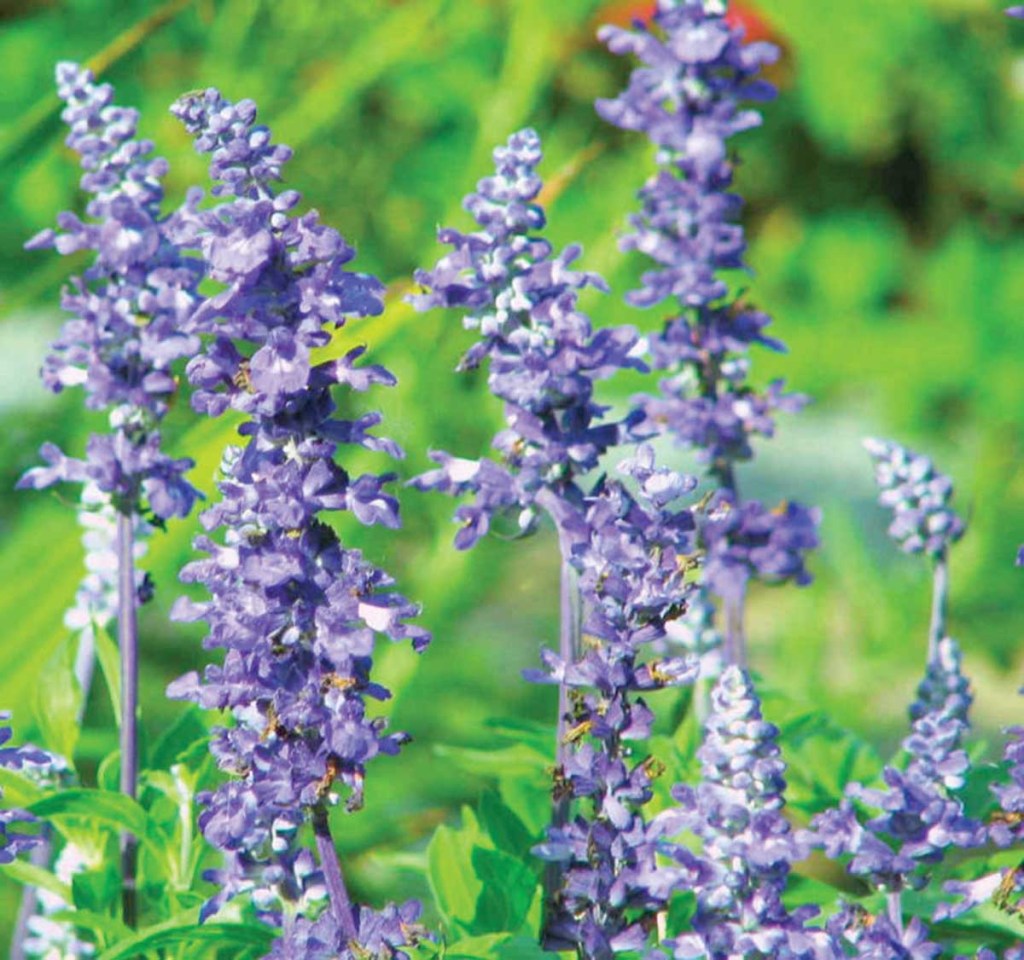Dangerous Drug or Harmless Plant?
Published 12:05 pm Wednesday, October 22, 2008

- Salvia a commonly grown plant throughout the south is quickly spreading as a drug of choice among teens.
Editor’s Note:
In an attempt to understand part of the culture inside high schools today, our intern is looking at all sides of campus life. The News-Aegis does not in any way advocate the use of drugs, including Salvia, or any mind-altering substances.
Say hello to the new LSD. Only this time, it’s legal. It’s called Salvia Divinorum, also known as Salvia A.
To many, it’s a leafy plant that grows in your garden. To others, it is an herbal remedy for relaxing muscles and relieving headaches. But to teenagers and twenty-something’s everywhere, it’s a brand new high.
Devine Sage, Magic Mint, or simply Salvia; it doesn’t matter what name you prefer. Type it into any search engine and you’re sure to receive upwards of 10,000 results. It’s an old drug with a new purpose, and word on the street travels fast.
The plant, a member of the sage/mint family, originates in the Northern Mountains of Oaxaca, Mexico . It was often used by the Mazatec Indians in healing and religious ceremonies. This is the only known area where the herb grows naturally, though many Americans cultivate it here in the states.
Dried leaves from the plant can be smoked through a pipe or as a joint, with effects lasting roughly 15 minutes. Fresh leaves can also be cut up and chewed, creating a much longer high. It is said that the longer the leaves remain inside the mouth, the more intense the hallucinations.
Common side affects include slurred speak, a sense of total confusion, deep misperception of reality, and severe lack of coordination.
The herb is outlawed only in Australia, Denmark, Finland , South Korea, Japan, Spain and Sweden and is otherwise easily attainable.
Some states require buyers to be at least 19 or have a doctor’s prescription, while other states do not. In Alabama, you must be 19 to purchase Salvia.
Age requirements aside, it is available to virtually anyone with a credit card, as many websites specialize in selling Salvia in various quantities.
In fact, many sites will even take money orders. If the Internet seems too risky, the herb is available for purchase in many drug and spirituality stores. As one can imagine, practically any young person can get their hands on this substance. Whether that needs to change remains highly debatable.
Some facts about why Salvia A has remained legal in many states:
* The high from the substance is relatively short. There are no documented deaths from the use of Salvia, and no one has died from car crashes while under the influence to date.
* Since the effects are short-lived, it is hard to create a dependency on the herb. Many of the people who smoke or chew Salvia do it for the increased sense of spirituality they feel.
* Many claim that while on a Salvia trip, they feel as if their entire world has been altered, fast forwarded, or sometimes ruined. Frequent users claim that the drug gives them a new, more appreciative perspective on life, and a truly self-altering experience.
* One user, comparing it to alcohol, said Salvia, unlike alcohol, which sometimes is as an escape from reality, cannot do so. With such short effects, one cannot take it in hopes of escaping their problems. Within minutes, they will have returned.
Rather, some take it simply to reduce stress and relax their muscles. Salvia can also be called a recovery drug. Some marijuana users have admitted to using Salvia in order to decrease their dependency.
MSNBC.com says of Salvia A: “The big problem with it from a safety standpoint is that people are pretty incapacitated when they take a hefty dose. They’re pretty much disoriented in space and time and could wander off a building or walk in front of a car. They wouldn’t even notice. They don’t know where they are.”
And users say that it is true that the natural and short-lived high and the hallucinations from the herb are very powerful. Users feel as if they have entered an alternate universe, one where they don’t know how to function.
Many feel they become conjoined with inanimate objects, and become increasingly sensitive to light, sometimes thinking it is fire. Someone using the Salvia by him or herself could run into a series of potentially dangerous situations.
The user could knock over a candle and start a fire, fall and potentially break bones or household objects, run into harmful objects like mirrors, or run outside in order to escape.
Many users take Salvia not for a high, but simply for the odd and sometimes scary experience that are bound to occur. The hallucinations that come about are not for the faint of heart. For those who are more resistant to change or risk, the event that takes place while under the influence of Salvia could be traumatizing.
For some, the cosmic ride is too intense, and panic can set in.
A college student at the University of Toronto, who wished not to use his actual name, said, “It’s strictly about information, no pleasure,” he conceded. “You can’t call it a high. You go into an altered stare of being, really. You don’t have anyone to hold you down. It can be a terrifying experience.”
He described his first Salvia trip by explaining a moment when he felt as if he was becoming a toy. He said, “I remember looking at what was a lot like a spinning top. It was spinning and the faster it spun. I felt like I was spinning with it. And then all of a sudden I looked down and I was it. I became the spinning top. I thought I was going insane.”
Many wonder why anyone would want to feel paranoia such as that felt when on Salvia. The question remains as to whether Salvia Divinorum should remain legal with age requirements in place, or be made illegal, as are similar substances like marijuana.
The fact is that the herb is gaining popularity and quickly becoming a name that many households are familiar with. As time goes on, Salvia will either prove itself to be an increasingly harmful or harmless drug.





